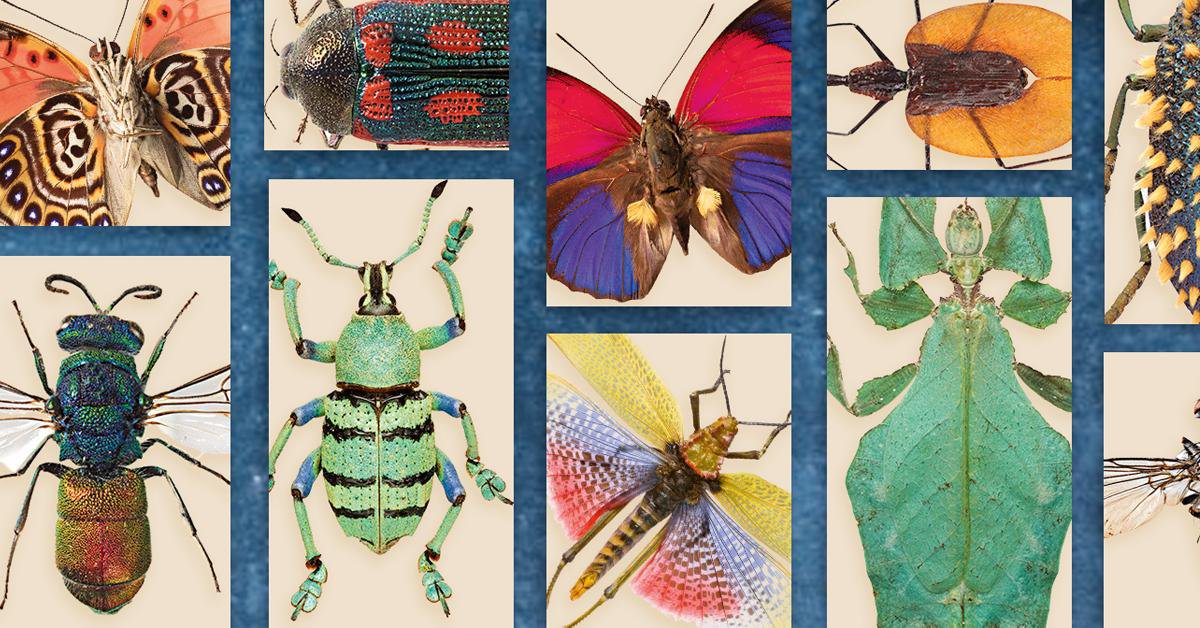Introduction:
Insects are a diverse group of animals that make up more than half of all known species on Earth. They can be found in every habitat on the planet, from the deepest oceans to the highest mountains. Insects play a crucial role in ecosystems as pollinators, decomposers, and as a food source for other animals. They have also developed incredible adaptations that allow them to survive in a wide range of environments.
Types of Insects:
There are over one million known species of insects, and new species are being discovered all the time. Some of the most common types of insects include beetles, butterflies and moths, bees, ants, and flies.
Beetles:
Beetles are the largest group of insects, with over 400,000 known species. They come in a wide range of shapes and sizes, from the tiny featherwing beetle to the massive Goliath beetle.
Butterflies and Moths:
Butterflies and moths belong to the order Lepidoptera and are known for their beautiful wings. There are over 180,000 known species of butterflies and moths, and they can be found on every continent except Antarctica.
Bees:
Bees are essential pollinators that play a crucial role in the ecosystem. There are over 20,000 known species of bees, and they can be found on every continent except Antarctica.
Ants:
Ants are social insects that live in colonies and work together to build nests, find food, and care for their young. There are over 14,000 known species of ants, and they can be found in every habitat on the planet.
Flies:
Flies are known for their ability to fly and their distinctive wings. There are over 150,000 known species of flies, and they can be found in every habitat on the planet.
Adaptations:
Insects have developed incredible adaptations that allow them to survive in a wide range of environments. Some of these adaptations include:
Flight: Many insects have developed the ability to fly, which allows them to escape predators and find food.
Camouflage: Some insects can blend in with their environment, making them difficult to spot by predators.
Mimicry: Some insects have developed the ability to mimic other animals, either to avoid predators or to attract prey.
Social behavior: Some insects, like ants and bees, live in highly organized colonies, where they work together to care for their young and find food.
Importance in Ecosystems:
Insects play a crucial role in ecosystems as pollinators, decomposers, and even as a food source for other animals. Without insects, many plants would not be able to reproduce, and ecosystems would suffer. Insects are also important in the food chain, providing a source of protein for birds, reptiles, and mammals.
Threats to Insects:
Unfortunately, many insect populations are declining due to habitat destruction, pesticide use, and climate change. This is concerning, as insects are essential for maintaining healthy ecosystems. Conservation efforts are needed to protect insect populations and their habitats.
Reproduction in Insects
Insects exhibit a wide range of reproductive strategies. Some insects, like bees and ants, live in highly social colonies where one or a few females are responsible for reproducing, while others, like grasshoppers and crickets, mate individually. Some insects lay their eggs in protected environments, while others lay their eggs on host plants or directly in the ground.
Insects also exhibit a diverse range of reproductive adaptations. For example, some male insects have specialized genitalia that allow them to transfer sperm to females in a way that maximizes their chances of fertilizing the female’s eggs.
Insects and the Environment
Insects play a crucial role in many ecosystems. They are often major contributors to nutrient cycling and can have a significant impact on plant growth and reproduction. Insects are also an important food source for many animals, including birds, fish, and other insects.
However, some insects can also have negative impacts on the environment. Invasive species, like the emerald ash borer and the spotted lanternfly, can devastate entire ecosystems by outcompeting native species or destroying valuable crops.
Conclusion:
Insects are a diverse and fascinating group of animals that play a crucial role in ecosystems. They have developed incredible adaptations that allow them to survive in Anatomy and Physiology of Insects
Insects have a well-developed body plan that includes three distinct body regions: the head, thorax, and abdomen. The head houses the insect’s sensory organs, including its eyes, antennae, and mouthparts. The thorax is where the wings and legs are attached, and it is also where the muscles for movement are located. The abdomen contains the insect’s digestive, reproductive, and excretory organs.
The circulatory system of insects is open, meaning that the hemolymph (insect blood) flows freely through the body cavity. Unlike humans and other vertebrates, insects do not have a closed circulatory system with veins and arteries.
Insects have a specialized respiratory system that consists of tiny tubes called tracheae. These tracheae allow oxygen to diffuse directly into the insect’s cells, eliminating the need for a separate respiratory pigment like hemoglobin.



